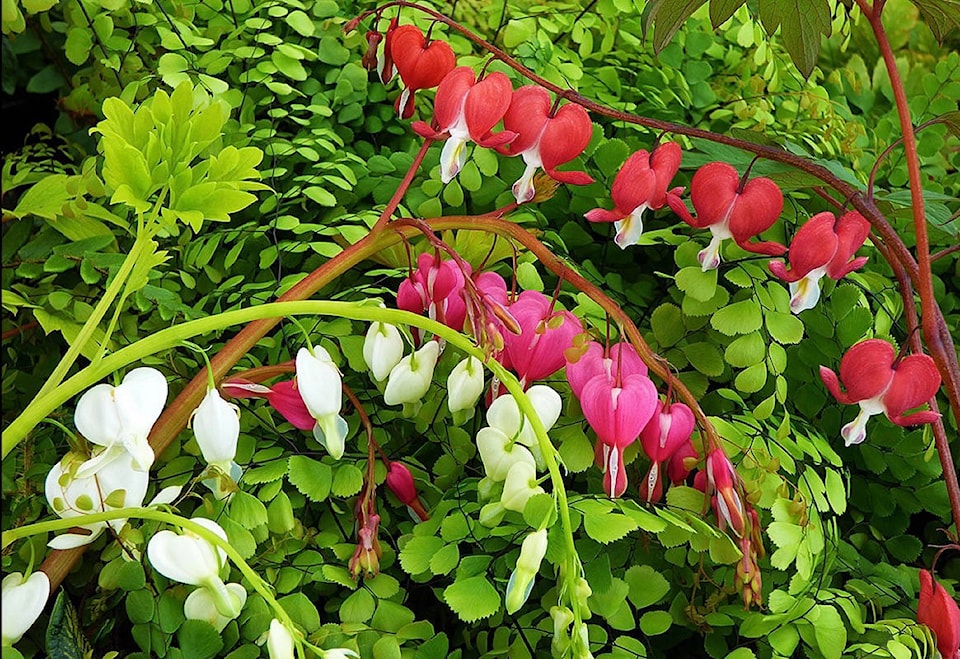I am going to let you in on one of horticulture’s dirty little secrets.
There is a small group of gardeners who delight in plant name changes, particularly those species with strange pronunciations.
They will quickly memorize the Latin elocution of said new name and wait in anticipation for one of their peers to make the mistake of using an outdated epithet.
That unfortunate will have to put up with a none-too-short lecture on keeping up with correct botanical terms, along with a lesson on proper pronunciation (overly emphasized with facial gestures), all accompanied by a wry grin that makes the Cheshire Cat look chronically depressed.
Case in point, the common shade perennial Dicentra spectabilis, or Bleeding Heart, underwent a drastic name change a few years ago, unbeknownst to all those not affected by ‘Botanical Epithet Syndrome’. It was transformed to Lamprocapnos spectabilis, with the first name meaning ‘shining’ (lampros) ‘smoke’ (kapnos), which neither the foliage nor flowers seem to resemble.
Genetic testing determined that it was distinct from the lower growing species such as Dicentra formosa and D. eximia, despite the striking similarity in flower structure. Of course, the botanists could have chosen a more recognisable name, such as Pseudodicentra, but instead decided to call it ‘Shining Smoke’, which makes for a better verbal smoke screen than plant description.
The only place you are likely to find this new name is on botanical garden websites, as retail nursery tags have yet to herald Lamprocapnos, preferring the old-fashioned Dicentra spectabilis. Of course, it isn’t the first time this species has undergone a name change, as it had been classified as Fumaria when first documented in the west.
The famous plant collector Robert Fortune (1812-1880) is credited with its discovery, but he actually purchased a specimen from a nursery at Shanghai, China in 1846 and had it shipped back to the Royal Botanical Gardens at Kew.
It became an immediate hit, and due to its ease of propagation became almost commonplace by the end of the 19th Century.
That popularity continues to the present day and for good reason, as it is one of the showiest perennials for the shade garden – although it thrives in partial shade and even tolerates full sun in coastal gardens with even soil moisture.
The traditional rose-pink heart-shaped flowers (with white inner petals) usually make their appearance from April to May and are held on elegant arching stems.
Beyond the species there are four fairly common cultivars to choose from: ‘Alba’, with grey-green foliage and pure white flowers; ‘Valentine’, a variety that bears intense cherry-red blooms; ‘White Gold’, with its chartreuse foliage accented with white flowers; and my favourite, ‘Gold Heart’, which combines the traditional rose-pink blooms with peach-coloured stems and bright yellow leaves.
The normal growth cycle for this herbaceous perennial is for it to go dormant by midsummer – this can occur earlier if the soil is allowed to dry out.
Heights average two to three feet tall, although I have seen spectacular displays of the species reaching up to four feet when conditions are ideal.
The stems of tall bleeding heart are also a bit brittle, so it might be best to keep these out of range of marauding pets or the kid’s soccer balls.
This species is easily fertilized with a top-dressing of rich compost in early spring, which will also help to amend the soil.
Division is quite simple and is best done in early spring or fall when dormant, simply dig up the entire mature clump, gently separate by hand and replant.
Mike Lascelle is a local nursery manager and gardening author (hebe_acer@hotmail.com).
